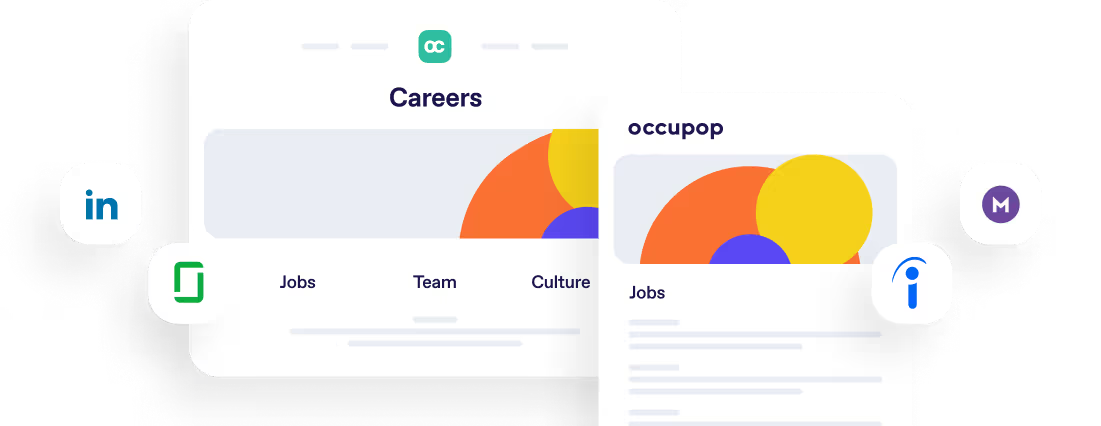Top 5 Recruitment Trends 2019



Traditional methods of posting job ads for open positions are not as effective as they use to be, especially when it comes to finding quality candidates.
According to LinkedIn hiring statistics, more than 70% of candidates are passive job seekers. This means that talent is even more scarce, as candidates are not even actively looking for new positions. With the demand for talent exceeding what is on offer in the current market, the skills and talents that human resources might find desirable in a candidate are now lost in a sea of resumes. According to a recent CareerBuilder survey, a reported 74% of employers admitted to having hired the wrong candidate, meaning recruiting talented candidates is more important than ever.
Here lies the problem with more traditional recruitment methods; today’s job market is now a candidate driven one. Candidates choose who they want to work for and how we hire needs to reflect that.
As we venture further into 2019, HR and hiring managers need to keep on top of and embrace the ever-evolving recruitment trends and ensure they're staying at the forefront of the mind of quality candidates.
To keep you on track of the recruitment trends hiring managers will face during the recruitment process in 2019, we’ve narrowed down and highlighted our selection of the “Top 5 Recruitment Trends 2019”.
1. Recruitment & Social Marketing
Recruitment marketing is a strategy based method of recruitment, through the use of specialised marketing tactics, geared toward attracting skilled but passive candidates to the company’s profile as an employer.
Just like a business needs to market its products and services, it also needs to market itself as an employer.
HR, hiring managers and their organisations should be marketing themselves around trending qualities candidates are looking for in their respective industries, marketing themselves as a company and a brand that a candidate would want to be a part of. The goal of recruitment marketing is to attract the ideal candidate, passive or active, to express interest or even better, apply for a position within your company.
This marketing technique is best utilised when following current trends, helping the organisation to keep up with the changing effects of the market and the demand by potential candidates.
As part of recruitment marketing, many companies utilise social media to attract potential candidates to their brand. Social marketing involves engaging and attracting candidates, highlighting the positive attributes of a company through social channels such as LinkedIn, Facebook, Instagram and Twitter.
A company’s social media presence can be a strong tool both in terms of a brand’s identity and their approachability as a potential employer. Furthermore, hiring managers can use social media beyond simply posting job ads, social recruiting allows you to research candidates and build relationships with those interested. Overall this method has a positive impact on public perception as an approachable brand and one that’s engaged with its candidates, allowing for a more positive candidate experience.
This method of recruiting is a growing trend amongst hiring managers with 94% of companies using social in their recruitment process, according to BetterTeam, leading to the assumption that this method is clearly working. Therefore hiring managers should factor this into their recruitment strategies and budgets to ensure a successful outcome.

2. Employer Branding
A tarnished reputation can be hugely detrimental for a company, affecting its productivity, its brand and importantly for hiring managers, talent attraction.
Businesses live and die by what is said about them. For example, bad TripAdvisor reviews can affect a hotel’s occupancy flow. In the same way, bad reviews regarding any organisation can create a damaging reputation; whether it be of their ethics, their working environment, or how they are viewed as an employer.
As candidates are now searching for more in-depth information on employers, it’s more important than ever to attract a candidate using a strong and attractive brand. According to a LinkedIn survey on Employer Brand Statistics, 75% of candidates research a brand’s reputation before applying for a job, with 69% of them turning down a job in a firm with a bad reputation. Therefore, the more reputable the company is, the more likely a company will receive quality candidates who are engaged with the company and the position available.
From brand awareness to information that a job seeker may find on a website such as LinkedIn or Glassdoor, i.e., salaries, job description, benefits, etc., there now needs to be a level of transparency in what a company has to offer for their prospective employees. This transparency can either build a company’s reputation as having a positive and generous employee value proposition or show that the company has very little to offer their employees.
INSERT-CTA
3. AI & Automation Technology
With employment rates at its lowest and companies in ongoing competition to attract the best talent, candidate experience and recruitment processes need to be as efficient and positive as possible. To combat this, hiring managers are now using Artificial Intelligence (AI) more often in today’s recruitment process. This growing trend in technology isn’t improving solely the productivity of recruitment, but also the day to day productivity and profitability of the organisation as a whole. In a recent Human Capital Trends report by Deloitte, companies that employ AI have 30% more profit than those that don’t.
Using software with AI capabilities allows hiring managers to streamline and greatly improve their recruitment process. Gone are the days where you need to scroll through every resume. Using AI, resume’s can now be screened and scored with the most suitable candidates presented first.
This AI technology coupled with automation technology such as workflows, email templates and reporting allows hiring managers to focus on the human interactions needed to ensure that the right employee is being hired. While AI can do a lot, it can’t vet the personality and sociability of an employee. AI and automation technology frees up time so hiring managers can build relationships with top candidates, ensuring the candidate’s suitability aligns with what the company is looking for.

4. Employee Wellness & Engagement
With employee wellness and mental health becoming a bigger focal point and a more open topic of discussion, employers are placing a strong focus on employee wellness and engagement in the workplace. The focus has shifted from office gyms and salad bars to support programs put in place for mental health and overall wellness. Many potential candidates now look towards how a company supports its staff in relation to work-related wellness, before deciding whether to work within that organisation.
It’s important for employees to feel comfortable asking their employers for a mental health day without judgement or fear of it affecting their career progression. According to CIPD's report on Mental Health at Work, only 39% of managers have been approached by an employee regarding a mental health issue. There is still a large disconnect here. An employer making it clear that mental health is something the organisation takes seriously would more likely result in candidates accepting positions and staying within companies where their health and well-being feels valued.
Whilst other benefits such as financial counselling and the use of wellness technology in fitness trackers and wellness portals are still commonly used; employers are starting to take a more considered approach to workplace wellness. For example, incorporating wellness programs into career development plans and employee recognition programs. This keeps employees happy, focused and engaged with their performance as well as their wellness, in turn, having a positive impact on the company brand and attraction of talent.
5. Candidate Experience
Candidate experience is the perception an individual has of an organisation's hiring process, whether they simply applied for a job to someone having worked for a company previously. This encompasses a candidates experience in dealing with the company in all aspects of the hiring process. From the application to interviewing and screening, to accepting the job.
Searching for a job can be a stressful experience, in fact, unless you are headhunted for a dream job, it generally is! There are numerous reasons that a candidate experience might be a negative one, for example, an employer may not have the capacity to respond back to an unsuitable candidate due to resume volume or, a candidate may be perfect on paper but the interview was not good due to nerves or an incorrect culture fit.
With websites such as Glassdoor & Indeed creating a forum for candidate/interview reviews, feedback from a positive candidate experience is crucial for a companies brand reputation. Companies can't hide anymore as experiences, good and bad, can be reviewed and seen by other potential candidates. As previously stated, a bad reputation can have a negative effect on recruitment and attracting talent.
If a candidate has a negative experience during the hiring process, they may be more likely to turn down the job, feel uncomfortable applying for another job with the same company, or refrain from recommending the company to others. According to a LinkedIn survey on talent trends, 83% of talent says a negative interview experience can change their mind about a role or company they once liked.
On the flip-side, if a candidate has a positive experience during recruitment this can greatly impact their perception of the company. According to the same study with LinkedIn, 87% of talent says a positive interview experience can change their mind about a role or company they once doubted.
In more serious circumstances, bad candidate experiences can cost a company money. According to CareerArc, 64% of candidates would sever their consumer relationship with a company after a bad experience during the recruitment process.
Employers can improve their candidate experience by being conscious of the time and effort applied by the candidate to the application process, reacting to this accordingly. For example, utilising Automation Technology to create customisable emails that can be sent to unsuitable candidates. Companies should adopt a process of open communication and transparency through the recruitment process, beginning with a clear job description. Candidates want to feel valued for their time and the company will have a more positive candidate experience once this is recognised.
INSERT-LINE
With a new generation entering the workforce, embracing and adapting to the above strategies can attract highly skilled, motivated and engaged talent, positively affecting the work environment, productivity and in turn, the bottom line. You just need to keep up with them - that’s where Occupop can help!
Our easy-to-use, smart recruitment software can save on average 4-5 hours a week during the recruitment process and up to 78% on recruitment costs. Using Occupop allows you to post to 20+ job boards, social media and your careers page instantly. That, along with our AI CV screening and automation of the hiring process, means we take care of the difficult and time-consuming tasks, leaving you with the time to find the perfect fit.
See how we can help, at occupop.com. Get started for free now!
Summary Points
Top recruitment trends 2019:
- Recruitment marketing
- Employer Brand
- AI & Automation
- Employee wellness & engagement
- Candidate experience
Simple. Beautiful.
Recruitment Software.
HR updates sent straight to your inbox
You might also like...


Manage your entire hiring process simply, from engagement to management, hiring and onboarding







Simple. Beautiful.
Recruitment Software.
Recruitment Software.






